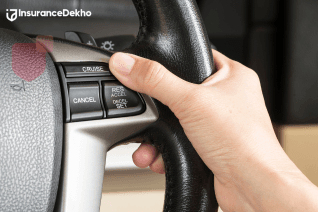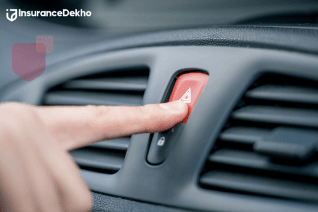Step-By-Step Process To Adjust Car Headlight
Step-By-Step Process To Adjust Car Headlight
Table of Contents
Imagine you are driving your vehicle at night and couldn’t able to see the other vehicle coming. Possibly, your car may collide with the other car and could lead to a serious accident. Therefore, when driving a car at the night, it is important to adjust headlights properly to look overall visual and surroundings of the road clearly. Headlights are a necessary part of the vehicle, especially when you are driving in dark. If you neglect to adjust the headlights of your car properly, it may lead to a serious accident. Read on to know when and how to adjust the car headlight in detail.

How to Know that Headlights of Your Car Need Adjustments?
The cars that are coming towards you and are flashing their headlights at you from high to low are trying to alert you that your headlights are glaring into their eyes and temporarily rendering them blind. This means, either your low beams aren’t adjusted properly or your high beams are turned on. The headlights are too low when you can’t see more than 20 or 30 feet distance from the front while driving. However, the headlights are too high if all you can see is the starry sky or the greenery of trees.
What Tools Are Required to Adjust the Headlight of the Car?
Listed below are the tools and materials that you would need to adjust the headlight of your car.
- Owner’s guiding manual
- Measuring tape
- Screwdriver
- Masking tape or painter
- An opaque object that block light
- A garage door or 25 feet spacious wall to back up
How To Adjust Your Car’s Headlight?
Here are the steps that you can follow to adjust the headlight of your car.
- Find the screws and levers for adjustments. You can check the car’s owner's manual for the details.
- Turn on the headlights after parking your car on a level surface.
- Look for a vertical, level surface to use as a guide while pointing headlights. This works best with a wall or garage door.
- Calculate the distance between the ground and the beam centre of the headlight to aim for the correct height.
- Turn the adjustment screws or levers on the back of the headlight assembly to change the direction of the headlights. As soon as the beams are properly aligned, make small modifications and test the headlight beam aim again.
How To Adjust Beam Height and Beam Pattern of Car’s Headlight?
You can adjust the beam height of your car’s headlights, and locate the adjustment screws or levers on the back of the headlight assembly. After this, raise the beam of the headlights by turning the top adjustment screw clockwise and vice versa. Once you complete this process, examine the car’s headlight to know if any more adjustments are needed.
In order to adjust the beam pattern of your car headlights, again you will need to adjust screws and lever. If you want to broaden the beam pattern, turn the left adjustment screw or lever clockwise and vice versa.
Why Do Headlights Go Out of Adjustments?
The headlights of your car go out of adjustment due to numerous factors. Some of them are highlighted below.
- Damaged Lens: If your car has older headlights that still have diffusion discs made of grooved glass can result in non-adjustment of your car’s headlights. Therefore, ensure that your headlights are new with clear lenses and headlamps, distributing the light in different directions.
- Internal Damage: If the delicate joints and adjustment screws of your car headlight get loose or brittle over time, it will result in the fluttering of the headlights.
- Accident or Collision: If your car gets hit by any other car or solid object leading to damage to the headlights would impact the adjustment of the headlights of your car.
- Impaired levelling of Headlight: Headlights must only function when you operate them manually either from the dial or wheel on the dashboard. However, if the beam of your headlights is constantly up and down automatically, it is a sign of the non-adjustment of the headlights.
Conclusion
Headlight is an important part of your vehicle. In case it is broken or not adjusted properly, take the appropriate action to adjust or repair it. Any kind of negligence can lead to serious mishaps for both you and others driving on the road.














































